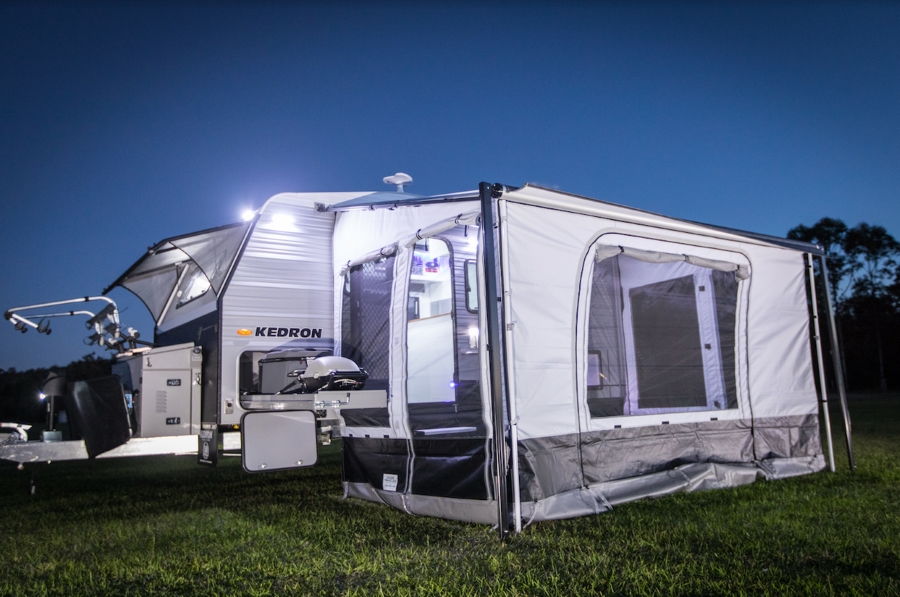8 Motorhome Issues You Can Safely Repair on Your Own
- Written by NewsServices.com

A motorhome, or campervan, may be a lot of fun and a refreshing time for you and your family as you get away from your stresses at home and create wonderful memories together. But what if your motorhome begins acting up while you're hundreds of miles away from home? That enjoyable time can rapidly turn into a nightmare.
A motorhome, like any other vehicle, can experience a variety of problems, some of which are far more common than others. If you spend a lot of time in your motorhome, you're certain to encounter costly repairs such as busted water lines, tyre blowouts, dead batteries, and a variety of other concerns.
To avoid being stranded in the middle of nowhere due to a defective vehicle, we've put together a guide on how to fix eight of the most frequent motorhome issues yourself.
1) Tyre Blowouts
Bumpy roads, worn tyres, heavyweight, and high temperatures are all recipes for a tyre blowout. Tyre blowouts are a regular problem with RVs due to the huge weight the tyres carry. Tyre blowouts can be avoided by frequently checking tread wear and tyre pressure, especially before going on a ride. You should also keep a spare tyre in your RV and make sure it is properly inflated before using it.
Find a safe area to pull over and change a tyre if you have a flat or a blowout. It is safer to park in a parking lot or at a gas station than to park on the side of the road.
Place your motorhome on level terrain and block the good tyres. Under the axles is the strongest area beneath the camper, so place the jack there. While the tyre is still on the ground, loosen the lug nuts and gradually raise the motorhome until the weight is off the tyre. To avoid injuries, make sure you use the correct jack for your vehicle. Please do not use the stabilising jacks to change your tyre because they are not intended to support the weight of your vehicle.
After you've replaced the tyre, tighten the lug nuts in such a way that you're tightening the lug nut opposite the previous one rather than going around. This tightening pattern aids in the alignment of the tyre.
2) Roof Leaks
The roof is an important component of a motorhome, since it protects us from the weather. Prolonged exposure to sunshine, adverse weather conditions, or low-hanging tree branches can all harm RV roofs. A leaking roof can result in unattractive water stains and mould growth. Leaks can also corrode metal fixtures and cause a short-circuit in your vehicle’s internal electrical system, rendering you powerless.
In the event of a leak, fix any loose holes on the roof with a roof patch, special sealing tapes, or silicone-based roof sealant. Roof covers are another option for temporarily keeping water at bay. Remember to perform frequent inspections inside and outside your motorhome to detect leaks early.
3) Clogged motorhome Toilet
Too little water in the system and too much toilet paper can both cause a blocked motorhome toilet. You may also have a blockage if the black tank valve is continually open. When all of the water in the tank drains first, all that's left is a sticky mess. And if there is insufficient water weight driving the solids out of the tank, they will clump together and produce a sludgy clog.
A flexible toilet tank wand can be used to unclog a clogged toilet. It comes with a nozzle that connects to your faucet via a flexible hose. Insert the wand into the waste drain pipe through the toilet bowl to break up the clog with a high-pressure spray to eliminate the clog.
Another alternative is to fill the tank with boiling water and leave it there overnight..
4) A/C Not Cooling
If you're camping in hotter climes, you'll need your motorhome’s air conditioning to be fully functional. A malfunctioning internal air con fan, unclean compressor, or burned-out capacitor can cause your air conditioner to fail to cool, or it could simply be too hot for your A/C to keep up.
There are some easy troubleshooting steps you can do. Check the breakers first, and make sure the A/C breaker hasn't tripped. If it has, you must reset the breaker so that your air conditioner can begin cooling again.
Next, inspect and clean the air vent filters and coils, or replace them as needed. If the thermostat is faulty, you may also need to replace it.
5) Dead RV Battery
Nothing is more frustrating than being stranded with a dead motorhome battery. Your vehicle’s batteries might expire for a variety of reasons, including faulty charging, drawing too much power, or sitting unused for an extended period of time. Maintaining your battery is an excellent way to increase its life.
Check the battery fluid levels on a regular basis and add distilled water as needed. When your camper is not in use, disconnect the batteries to save electricity. Also, never allow a lead-acid battery to lose more than 50% of its electrical charge. If you're storing your recreational vehicle, connect the battery to a tender to keep it charged.
To recharge a dead motorhome battery, connect your vehicle to shore AC power. If the charging temperature is not between 10 C and 30 C, the battery will not charge. If the battery still does not hold a charge, it must be replaced. Consider investing in maintenance-free sealed batteries.
6) Damaged Slide Out Mechanism
If your vehicle’s slide-out mechanism becomes stuck, check the power supply first. Look for a blown fuse, frayed wiring, or a low battery. Check the moving parts for rust and corrosion, and make sure the slide-out isn't blocked or misplaced.
If the slide still won't move, lubricate the moving parts with WD-40 and physically pull it out. Check your owner's manual for instructions.
To function properly, your slide-outs require frequent maintenance. Maintain frequent inspections, cleanings, and lubrication.
7) Burst Water Lines
Many motorhomes experience broken water pumps or burst water lines during the winter. Water in your pipes freezes and expands in freezing weather, busting pipes or ruining your pump. So, before you store your vehicle, empty the tanks and add antifreeze to the water system.
Apply lubrication to the seals to keep them from cracking. If you detect a rip or a hole, you should acquire some silicone sealant to repair it. Apply a quantity of sealing lubricant to a burst pipe or pump to keep it working properly. If it continues to leak, consider replacing it.
8) Burnt Light Bulbs
An RV is frequently outfitted with numerous light bulbs, which frequently burn out over time. So, before you hit the road, check all of the RV lights and replace any that are burned out. Even if you're on the road, having a package of additional light bulbs on hand to simply replace out a burned-out bulb is always a good idea.
Conclusion
Regular maintenance is the key to avoiding most motorhome problems. Make a maintenance and inspection checklist and go over it at least twice a month or whenever you next depart for another glorious cross-country motorhome adventure.
Find your ultimate new or used motorhome today!







